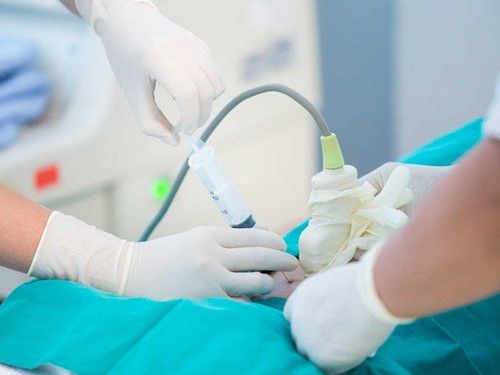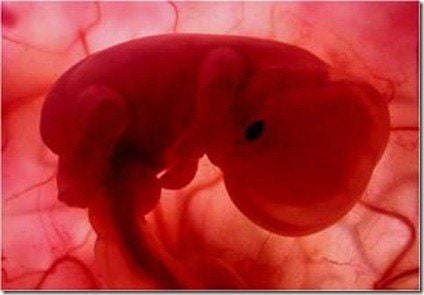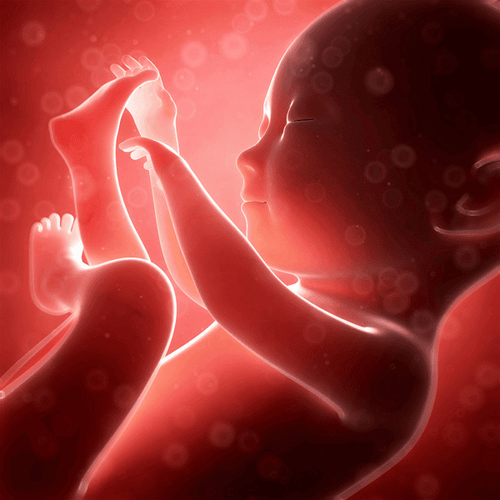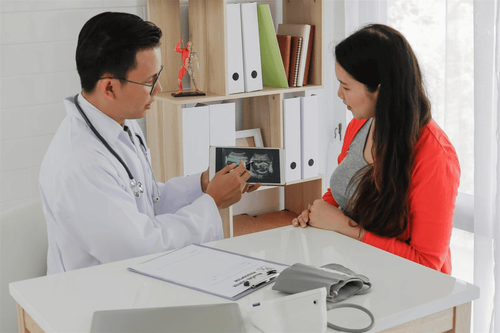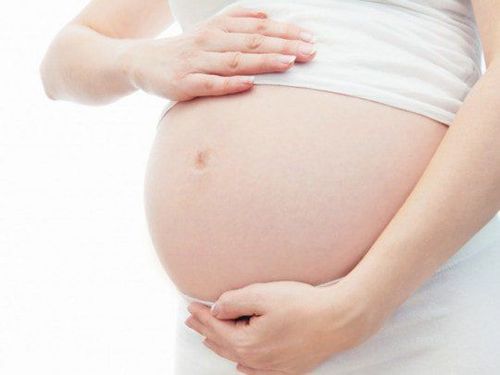This is an automatically translated article.
The article was professionally consulted by Doctor Department of Obstetrics and Gynecology - Vinmec Hai Phong International General Hospital.
Along with the phenomenon of mechanical pregnancy, sometimes pregnant women will feel their abdomen swell up with a hard lump, which can even "distort" the abdomen. Especially, in the last months of pregnancy, these contractions will appear more and more with different intensity and frequency.
1. What are labor, physiological and mechanical contractions?
1.1. There are two types of labor contractions: full-term labor (term labor after 37 weeks) and preterm labor (labor between 22 and 37 weeks of pregnancy). ). When there is a real labor contraction, the pregnant woman will see the pain gradually increase, last longer, the frequency is also intense and will prepare to give birth in a few hours.
1.2. Physiological contractions Physiological contractions, also known as false labor contractions, appear around the 4th month of the pregnancy cycle, are often irregular and non-cyclical. These contractions are the first step for the uterus to train for the day of delivery and exercise the mother's stamina. To reduce physiological contractions, pregnant women should drink a lot of water, move to another position to relieve pain, take time to rest and lie on the left side.
The pain may also not be uterine contractions but due to increased bowel movements because the uterus is compressed, this pain is usually not worrisome. In cases of extreme discomfort, pregnant women can use conventional tocolytic drugs.
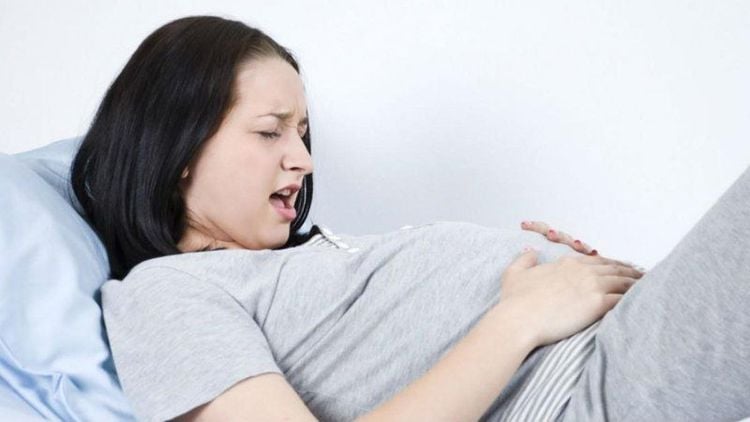
1.3. Mechanical pregnancy Mechanical pregnancy is the phenomenon of fetal movement in the mother's womb. This is a sign when the fetus has movements such as turning, arms and legs or the whole body moves. When the number of pregnancies decreases, it is a warning sign of poor health of the baby. Normally, it is not until 18-20 weeks of pregnancy that the mother's body can begin to feel the movement of the fetus. Some cases can begin to feel the fetus when entering around 16 weeks of pregnancy.
Trắc nghiệm: Đặc điểm cơn đau đẻ và diễn biến cuộc chuyển dạ
Cơn đau đẻ là dấu hiệu thông báo sự chào đời của em bé. Cùng thử sức với bài trắc nghiệm sau đây sẽ giúp các bà mẹ mang thai nhận biết cơn đau đẻ và diễn biến cuộc chuyển dạ để chuẩn bị trước tâm lý những gì sắp xảy ra đối với mình.The following content is prepared under supervision of Thạc sĩ, Bác sĩ y khoa, Tạ Quốc Bản , Sản phụ khoa , Khoa Sản phụ khoa - Bệnh viện Đa khoa Quốc tế Vinmec Phú Quốc
2. Distinguish between labor contractions, physiological contractions and mechanical pregnancy
Characteristics of physiological contractions:
Physiological contractions are only mild contractions, occurring in 30-60 seconds, several times a day; The contractions are not painful, but they can be uncomfortable for the pregnant woman. It usually happens when the fetus in the womb moves or the mother touches the pregnant belly, also after sex or when the bladder is full. Physiological contractions do not increase gradually over time, do not change the cervix.
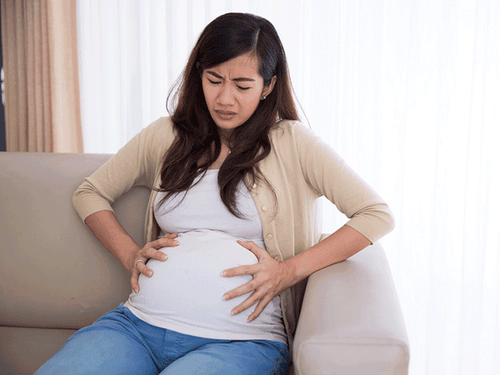
The feeling of contraction is concentrated in the abdomen, tight in the lower abdomen. Physiological contractions usually appear when the mother is tired, dehydrated or walking too much and will disappear when the mother rests or relaxes. Features of labor contractions:
During labor, pregnant women will have dull pain in the lower abdomen or back. The pain starts in the lower back, then spreads to the abdomen, can hurt both thighs and 2 sides. The pelvic area is tense, there is a very strong feeling of pressure. The pain of labor is similar to menstrual cramps, but the pain is more severe.
The contractions appear continuously with a feeling of intestinal cramping, become more frequent with increasing intensity and do not subside when you change positions or do anything. Vaginal pink mucus discharge or rupture of membranes During labor, examination reveals that the cervix is dilated from 7-10cm, uterine contractions will be continuous and pain increases, lasting from 60 to 90 seconds after 30 seconds - 2 minutes and you will be ready to give birth in a few hours. Features of the mechanical fetus:
The fetus starts kicking around 8 weeks old but it is difficult to recognize. When the fetus is still small, the feeling of pregnancy is like bubbling water, appearing scattered throughout the day and does not make any sound or discomfort for the mother. The weeks after the 20th week, the fetus has stronger and more obvious movements, the number of times of the machine is also more, stretching, kicking, pulling more often and especially in the last weeks of pregnancy.
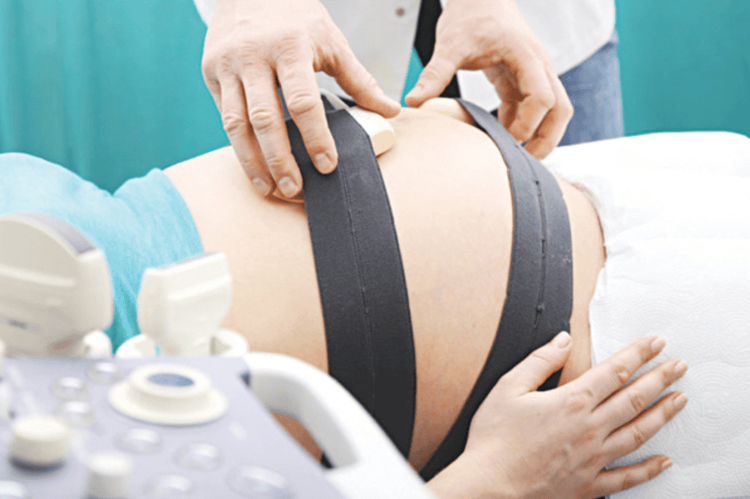
The mother can see the baby's movements on her skin. At this time, the mother can feel the somersaults, turns, elbows and abdominal wall and especially the mother can feel the baby's tiny elbows, feet, and legs. Pregnancy is more and most pronounced when the mother rests in a quiet place or after her meal. Usually, the fetus will wake up at these times according to its biological clock. Every 3 to 4 hours of mechanical pregnancy Note: do not confuse gastric activity with mechanical pregnancy or uterine contractions. After 5 months, if the mother does not see the pregnancy as a warning sign or the pregnancy changes erratically, increases or may decrease compared to the average, the mother should immediately go to the hospital for a timely examination by a doctor.
3. How to make pregnant women more comfortable with uterine contractions
When the body has uterine contractions during pregnancy, pregnant women can apply some of the following tips to help relieve pain:
If it is a physiological contraction, you should take a warm bath or drink a glass of warm water. can help ease the pain. When you feel pain, you can try slow breathing or change your lying position. Try to take a few naps during the day, eat something or relax massage, listen to music, ... Pregnant women should not rub their belly or suck their nipples in the "sensitive" weeks because there is an increased risk of childbirth. young. Where contractions occur frequently even though they do not cause pain; contractions do not decrease when pregnant women drink water, rest or change position; painful contractions occurring before 37 weeks of pregnancy; The contractions gradually increase in time, distance and intensity, accompanied by a lot of pain, bleeding, broken water or amniotic fluid, then the mother needs to go to the hospital as soon as possible.

At Vinmec International General Hospital, there is a package maternity service as a solution to help pregnant women feel secure because of the companionship of the medical team throughout the pregnancy. When choosing Maternity Package, pregnant women can:
The pregnancy process is monitored by a team of qualified doctors Regular check-up, early detection of abnormalities Maternity package helps to facilitate the process. birthing process Newborns get comprehensive care
Please dial HOTLINE for more information or register for an appointment HERE. Download MyVinmec app to make appointments faster and to manage your bookings easily.





